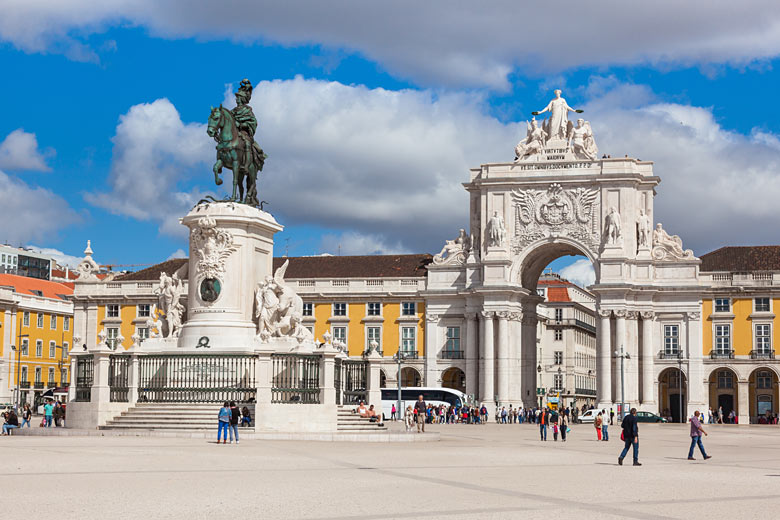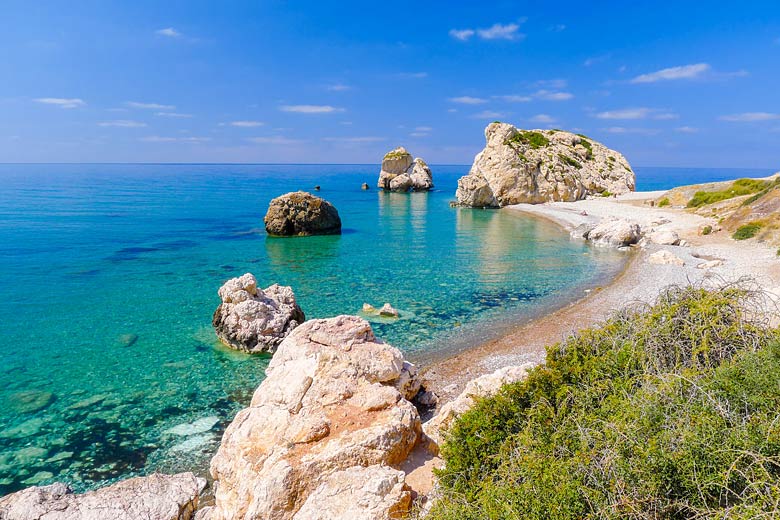Why you should visit the curious city of Cartagena, Spain
Until all too recently, the Spanish navy kept the remarkably situated city of Cartagena mainly to itself. Its ramble of neglected historic buildings hinted at what might be possible for those lucky enough to stumble across it but even its once landmark Roman Theatre lay buried and unknown to modern man.

That's all changed as the navy has eased its hold and investment has gone into this seriously architecturally diverse Mediterranean port city. Today, Cartagena*, with its architecture, history, museums, walks and eclectic places to eat, makes not just for a top-notch day trip, but a seriously rewarding holiday destination in its own right.
Getting to Cartagena: pick a great value itinerary with Marella Cruises* and you could be sailing into the city's port in no time. Browse the latest deals on cruises to Spain*.
For the Med's greatest historic hits
Cartagena is quite simply one of the most deeply historic cities in Spain*. Its story reads like a bewitching who's who of Mediterranean history, with legends swirling around everyone from the Carthaginians through to the Romans, who knew it as the 'New Carthage'.
There are tales from Arab times and traces of Byzantine and Phoenician influences in an eclectic city that feels like an open-air museum.
To see its eclectic architecture
Enough to stop students of architecture in their tracks, the sheer diversity of styles that Cartagena proudly displays is enough to stir even the most jaded travellers.
We're talking a merry melange of Art Nouveau mixed in with bountiful Baroque, a touch of the Neoclassic to rival the elegant Spanish speciality Modernista, with its Catalan roots.
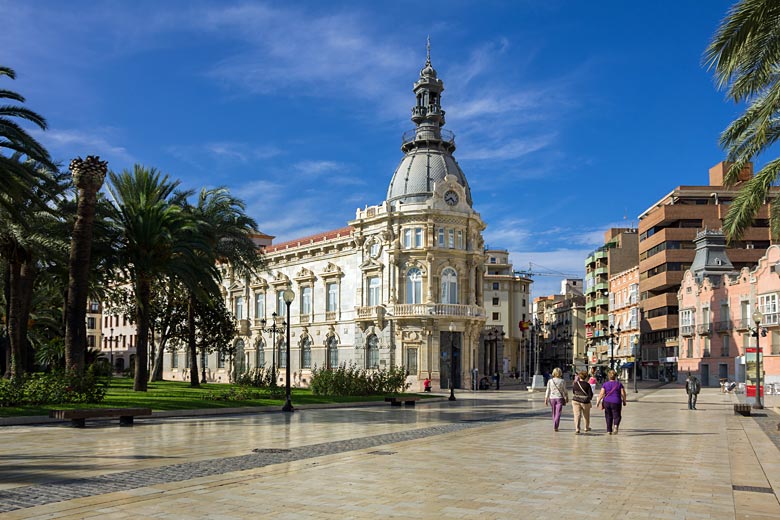
Modernist highlights include the imposing Town Hall and the way less than utilitarian Cartagena Casino.
Then there's Casa Maestre, said to have been inspired by Antoni Gaudí's work in Barcelona, with its elegant floral motifs, curved and intricately carved balconies and aesthetically pleasing natural lines. The more stately Aguirre Palace also has its Modernist flourishes.
Discover a port of two halves
The Port of Cartagena has been home to Spain's Mediterranean fleet since the 18th century and you can still see the navy messing around in boats. To learn more, head for the Naval Museum housed in a former barracks and arsenal. A highlight is the world's first electric submarine, created here by Isaac Peral.
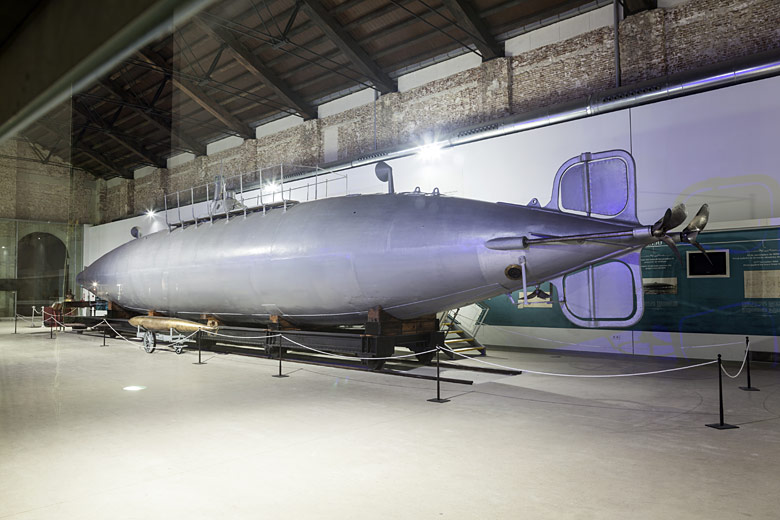
The Museo ARQUA, meanwhile, delves deep into maritime archaeology.
Walk along Paseo de Alfonso XII and try to take the scale of it all in: the navy shares this grand natural harbour with a fishing fleet, container ships and an increasing swathes of pleasure craft and sleek yachts; plus, of course, an increasing armada of cruise ships.
The Sendero Azul del Puerto de Cartagena is a glorious short hike that opens up the port and leads to views of the open sea.
Explore its Roman heritage
Of all the ancient civilisations that have left their mark on Cartagena it is the Roman legacy that shines brightest. The unmissable site is the Roman Theatre, forged to house 7,000 cheering and jeering spectators over 2,000 years ago. It was only unearthed again in 1988.
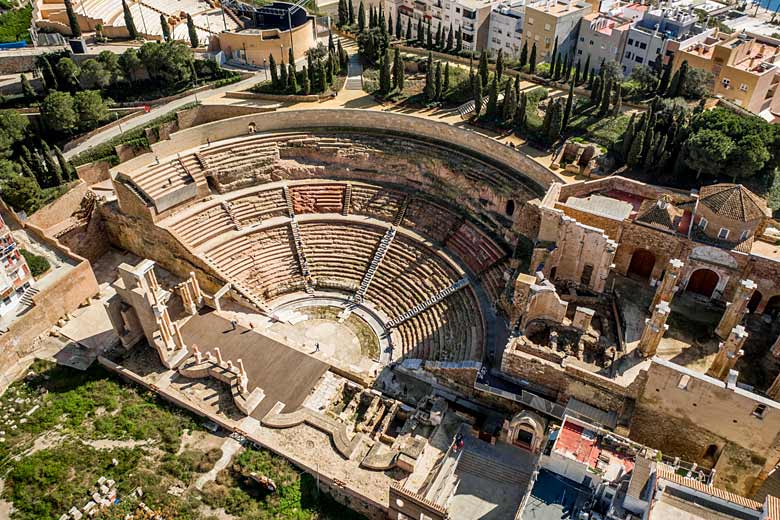
Continue on the Roman trail with the striking floor mosaics and murals at the Casa de la Fortuna, uncovered in 1971, but dating back to the 1st-century BCE.
Here you enjoy a window into a Roman home rather than civic grandeur. It's back to the big business at the Forum, where you can explore the Sanctuary of Isis, thermal baths and the Decumano, once the city's main thoroughfare.
...and Spanish Civil War legacies
Many Spanish cities sweep the Spanish Civil War and the all too recent Franco years under the carpet. Not Cartagena. The city stood proud against the fascist dictator as home to the Republican Navy and is proud it was the last city to fall to his forces.

A hulking legacy is the Castillitos Battery, which was fashioned between 1933 and 1936, though its castle-esque design makes it look and feel older.
Your pick of beautiful beaches
Cartagena may be a city, but it's no slouch on beach options, especially if you have a car. Stretches of sand sprinkle all the way from the Cabo Tinoso in the west to the Cabo de Palos and La Manga del Mar Menor in the east.
The Mar Menor, historically a favourite bathing spot of Spanish royalty, is an inland sea that is always a few degrees warmer than the Mediterranean, worth bearing in mind if you're here outside summer and early autumn.
Cala Cortina is the nearest beach to the city, with a backdrop of coastal defences reminding you where you are. Playa de Levante tempts at the foot of the Cabo de Palos and the fringes of the famous resort spit of La Manga too.
La Azohia is a bijou beach in a marine reserve with a chilled fishing village vibe. Playa Calblanque is a great escape within the Calblanque Regional Park, a protected nature reserve. You might even be lucky enough to spot a turtle as you emerge through the dunes.
Enjoy a feast for the stomach
Cartagena isn't hailed as one of Spain's great food cities, perhaps as it doesn't so much have its own distinctive cuisine, but rather borrows many of the best bits from elsewhere.
Here, tapas bars would pass muster in Seville and the seafood restaurants rival Spain's islands, while in the sublime Magoga, the city's very own Michelin-star restaurant.
The quintessential Cartagena experience is reclining in the sun with the sparkle of the water reflected in your sunglasses, as you savour a bone-dry Murcia region wine as you finish your tapas just in time for the fresh fish to arrive.
It makes a brilliant base
Cartagena's not just a great base for a navy. There are those beaches all around and then head north and you can seek out Murcia, one of Spain's most underrated cities.
Its cathedral is worth the day trip here alone, backed by a cobbled old town that echoes Seville, with lashings of great lunch spots too.
Caravaca de la Cruz is the fifth Holy City of Catholic Christianity, home to the epic castle of Caravaca de la Cruz, which hovers high above the village. The castle houses Santuario de la Vera Cruz and the shrine of the Santísima Vera Cruz, a piece of wood said to hail from Christ's crucifixion cross.
Climate in Cartagena
| Jan | Feb | Mar | Apr | May | Jun | Jul | Aug | Sep | Oct | Nov | Dec | |
|---|---|---|---|---|---|---|---|---|---|---|---|---|
| Maximum daytime temperature °C | ||||||||||||
| Hours of sunshine (daily) | ||||||||||||
| Days with some rainfall | ||||||||||||
| Sea temperature °C |
The above guide shows the climate in Cartagena. Find out more about conditions across the country in our complete guide to the climate in Spain.
Ready to explore Cartagena? Check out the latest offers on itineraries with Marella Cruises.
More about the Cartagena
- Overview
- Best time to visit
- Weather by month
- 5-day weather forecast
- Destinations
- Travel advice
- Deals & discounts
Cartagena by month
Jan Feb Mar Apr May Jun Jul Aug Sep Oct Nov Dec
Explore holidays in the sun for less
- Beach holidays
- Family holidays
- City breaks
- Summer holidays
- Winter sun holidays
- Holiday offers
- Top travel brands
- Airlines & flights
- Discount hotels
- Airport parking deals
- TUI
- Jet2holidays
- easyJet holidays
- Love Holidays
- Black Friday sales
Airport parking
- Manchester Airport
- Stansted Airport
- Bristol Airport
- Luton Airport
- Birmingham Airport
- Edinburgh Airport
- Gatwick Airport
- Glasgow Airport
- Newcastle Airport
Airport lounges
- Manchester Airport
- Birmingham Airport
- Bristol Airport
- Edinburgh Airport
- Glasgow Airport
- Heathrow Airport
- Newcastle Airport
- Stansted Airport
- Gatwick Airport
Be inspired
Get your weekly fix of holiday inspiration from some of the world's best travel writers plus save on your next trip with the latest exclusive offers
We promise not to share your details

































